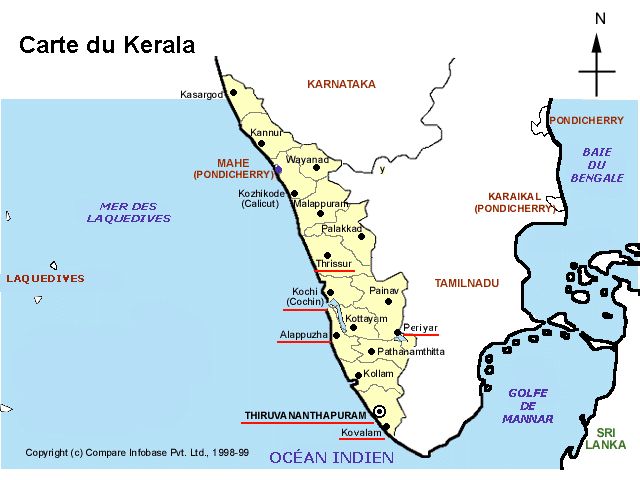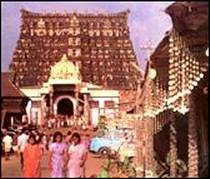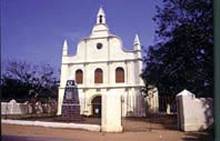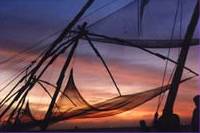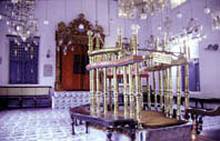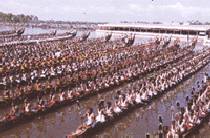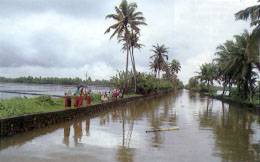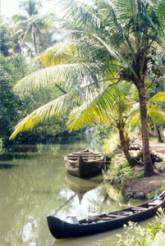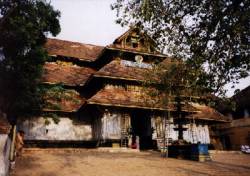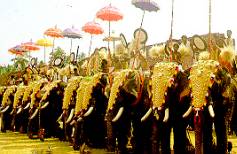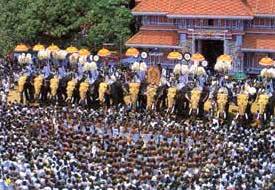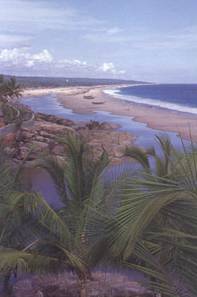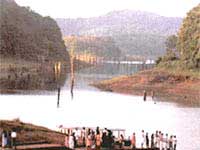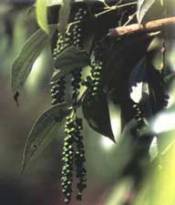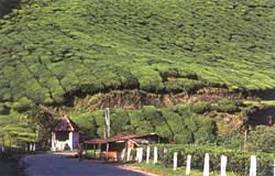The state of Kerala is located in the extreme southwest of India. With a population of 30 million, its surface area is 38,900 km2 and its capital is Thiruvananthapuram (formerly Trivandrum). The majority language is Malayalam.
Agriculture is the main economic activity. Plantations of spices, tea, coffee, rubber, coconut, etc. represent 40% of cultivated land. Kerala is one of the largest spice producers in the world. Industrial companies are mainly active in the textile and agri-food sector. The work of the coir (coconut fiber) and mahogany represents a large part of the family industry. Kerala is the most progressive state in India. The literacy rate (91%) is the highest in the country.
The state is known for its backwaters consisting of lakes, lagoons, rivers, canals that sink, sometimes far enough, into the interior. Boat trips on the backwaters are unavoidable. The climate of Kerala is tropical, temperatures vary little from one season to another. On the other hand, the gaps can be large between the plain and the summits of the Western Ghats.
History
From ancient times Kerala was a hub of trade between Asia and Mediterranean Europe. In 1498 Vasco De Gama landed on the coast of Kerala. This date marked the beginning of the European presence. Because of this open position on the outside, the population and culture of Kerala are the result of a long cosmopolitan mix. All religions are represented in Kerala. Although the Hindus were still the majority, the Jews found refuge there as early as the 6th century BC and the Christians settled after the arrival of Saint Thomas, not forgetting the Muslims who came from the North.
Map of the province of Kerala
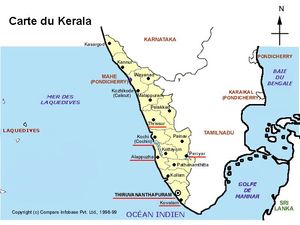
Map Kerala
Thiruvananthapuram
Thiruvananthapuram (900,000 inhabitants), formerly called Trivandrum, is the capital of Kerala. Its name means "the city of Lord Anantha". Anantha (or Ananda) is the sacred serpent with a thousand heads on which rests Vishnu. The city is built on seven hills. Its geographical location, its environment, make it a rather pleasant city to live compared to the other big cities of South India.
Thanks to its international airport, Thiruvananthapuram is today a large commercial and tourist center and the city is an ideal gateway to Kerala. By visiting the city you will see the religious tolerance that Kerala has always shown in general since churches, mosques and temples are sometimes built a few meters from each other.
The temple of Sri Padmanabhaswamy
It was built in the reign of Travancore raja, Marthada Varma, in 1733 on the foundations of an ancient temple built, according to legend, to house a statue of Vishnu has lying on the sacred serpent Ananda to which the temple is dedicated. The corridors are bordered by 368 sculpted columns and there are multiple murals as well as seven-storey gopuram. Only Hindus wearing a dhoti or a sari are allowed to enter the temple.
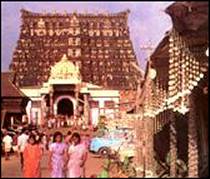
The temple of Sri Padmanabhaswamy
The Napier museum
Set in a building of Kerala architecture, this eclectic museum houses bronzes, processions, decorative objects, ivory carvings, costumes, and musical instruments. music, etc.
The La Sri Chitra art gallery
There are many paintings of various origins (tanjore, moghole, bengal ...) and portraits of the maharajas and the British rulers who ruled the region.
The zoo
Renowned for being one of the most beautiful in Asia, the park is surrounded by lakes and lawns. The zoo offers birds and exotic animals.
Kochi (Cochin)
Kochi (formerly Cochin) was already known in antiquity by the Egyptians and the Romans to be an important trading port. The city was always cosmopolitan because it was here that the first Christians, the Chinese, the Jews fleeing the persecutions, the Arabs and then the Europeans (Portuguese, Dutch, English) landed in the Middle Ages. Vasco de Gama set foot there in 1498. These successive waves allowed the rapid development of Kochi and made it a great center of the spice trade.
Some areas of Kochi (Fort-Cochin, Mattancherry) have preserved a European atmosphere. This is where the oldest buildings in the city (St. Francis' church, the synagogue, etc.) still stand. This part is separated from the modern district (Ernakulam) by an arm of the sea on which, been raised an artificial island (Willingdon). Two road bridges, leaning on the island of Willingdon, connect the old quarters to Ernakulam. But ferries are the most convenient and economical way to travel from one island to another.
Even today, Kochi is the most important trading port of South India and one of the major industrial centers of the region.
The St Francis Church
It is the oldest church in India. It was erected at Fort-Cochin by the Franciscans in 1516 who consecrated it to Saint Anthony. The building was first restored in 1779 by the Dutch who took the city in the 17th century and then by the English in 1886 which renamed it the name of Saint Francis. Vasco de Gama was buried and buried there in 1524. His body was only repatriated to Portugal 14 years later. His tomb, empty, still visible in the church. Masses in English and Malayalam are said every Sunday.
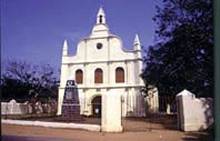
The St Francis Church
Chinese squares
These large fishing nets are in Fort Cochin. They were introduced to Kerala by the Chinese from the court of Kubilai Khan in the thirteenth century. Always used, these impressive structures are manipulated by five to eight men.
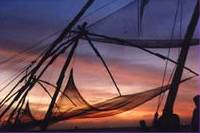
Chinese squares
The synagogue
Built in 1568, it was partially destroyed by the Portuguese and then restored by the Dutch. In the 18th century, the floor was paved with hand-painted blue earthenware tiles in China. They all represent the same landscape but subtle variations mean that none is the same as the other. The Jewish community in Kochi has only a dozen members and there is no more rabbi.
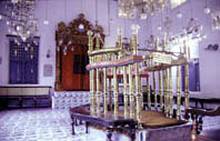
The synagogue of Kochi
The Dutch palace of Mattancherry
This palace was built by the Portuguese in 1555 and then offered to Raja of Kochi, Veera Kerala Varman. The Dutch palace was named after Dutch restorations from 1663. It was in the central hall of the palace that the rajas of Kochi were crowned. Today we can see the gallery of portraits of these rajas, their costumes, their palanquins, etc. The walls of the neighboring rooms are covered with paintings of the seventeenth century with the theme Mahabharata and the Ramayana.
The schools of Kathakali
Kathakali is a traditional form of dance from Kerala. Many schools are located in Kochi and provide short representations for tourists. Most of the time the actors wear make-up in front of the public and explain the stage play.
Alappuzha
Nicknamed "the Venice of India", Alappuzha (formerly Alleppey) is traversed by canals that grid the city. In the nineteenth century, the city enjoyed a certain growth, notably thanks to the coconut industry, but the growing influence of Kochi and its port put a brake on it. The town offers little to see. It is best known as the starting point for cruises on the backwaters to Kollam further south and for its famous canoe race, the Nehru Trophy. Alappuzha can also be the starting point to other sites (Ambalapuzha and its temple, Karumadi and its black granite Buddha statue, Arthunkal and its Portuguese church, etc.).
The Nehru trophy
The first boat race took place in 1952 during a visit from Nehru to Alappuzha. Since then, every second Saturday in August, dozens of tapered canoes (the chundans) clash on Lake Punamada. Up to a hundred oarsmen, sheltered under umbrellas of colored silk, can stand on these richly decorated canoes.
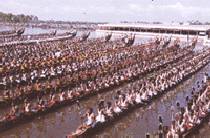
The Nehru trophy
The backwaters
Backwaters is the generic name given to the network of canals, rivers, ponds, which sink inland between Kochi and Kollam. They constitute an important ecological network in equilibrium threatened by the drying up and expansion of the population. The dwellings are built on narrow strips of land. The inhabitants, however, managed to raise cattle and worked on the extraction of sand for the construction, processing of coconut and cashew nut.
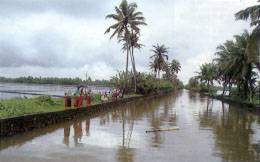
The backwaters
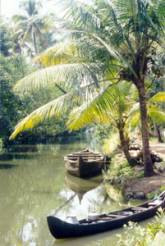
The backwaters
Thrissur
Thrissur (formerly Trichur) is often considered the cultural capital of Kerala. The city is built around a small hill at the top of which stands the temple of Vadakkunathan. The rise of Thrissur reached its peak during the reign of Raama Rama Varma in the eighteenth century
The temple of Vadakkunathan
It is one of the oldest temples in the region. It is renowned for its painted walls and historic artwork. Its architecture is representative of the style of Kerala.
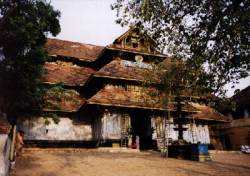
The temple of Vadakkunathan
The Feast of Pooram
This festival, which takes place in April / May, is famous throughout India and attracts hundreds of thousands of faithful and tourists. During this feast the deities of nine surrounding temples are transported to the temple of Vadakkunathan. The highest point is at the elephant rally. Two groups composed of fifteen pachyderms decorated and caparisoned with gold face each other, separated by thousands of people. Mounted on the backs of elephants, the men deploy richly decorated plumes and umbrellas. The group that has made the most beautiful, the most original and who will have offered the best show will be declared the winner by the acclamations of the crowd.
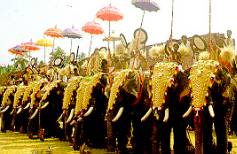
The Feast of Pooram
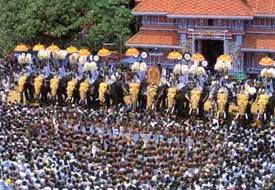
The Feast of Pooram
Kovalam
Not much to see in Kovalam except the beach. The city is renowned for its calm and its gentle way of life. We come here to rest even if the massive arrival of tourists has attracted at the same time hotel developers and merchants of souvenirs of all kinds. For a few years the city has become highly "westernized" and is no longer truly representative of these traditional fishing villages that make the charm of South India.
The beaches
Not much to see in Kovalam except the beach. The city is renowned for its calm and its gentle way of life. We come here to rest even if the massive arrival of tourists has attracted at the same time hotel developers and merchants of souvenirs of all kinds. For a few years the city has become highly "westernized" and is no longer truly representative of these traditional fishing villages that make the charm of South India.
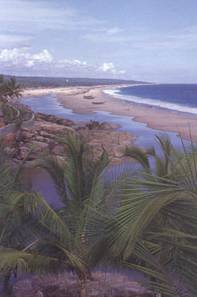
The beaches of Kovalam

The beaches of Kovalam
La réserve de Periyar
Located on the border between Tamil Nadu and Kerala, this natural reserve of 777 km2 extends around an artificial lake of 26km2 created in 1895 by the English to irrigate the plain surrounding Madurai. The beauty of the site and its freshness attract many tourists, both Indian and Western.
The visit of the reserve
The park is home to many animal species (tigers, elephants, birds, monkeys, bison, antelopes ...). Boat cruises for about 50 people are organized and last about two hours. You can also try to rent smaller boats but these are often taken by assault. Know that the boats follow each other at the tail leu leu and that the chances of seeing the most fearful animals are reduced. One of the best solutions to discover the park is to hire the services of a guide who will take you on the trails that sink into the forest.
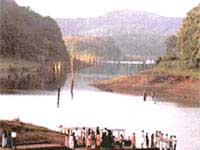
The reserve of Periyar
Planting spices
This part of Kerala is one of the major centers of spice production. The surrounding hills are covered with plantations of tea, pepper, cardamom, cumin, coffee, cloves, etc. To rent the services of a guide, go to one of the many spice shops and negotiate the price of the visit. You will also be able to make your reserves of spices favorites as the prices practiced are low.
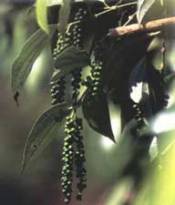
Planting spices
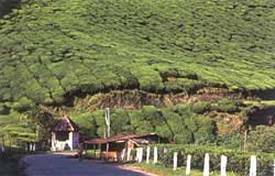
Planting spices
See also:





